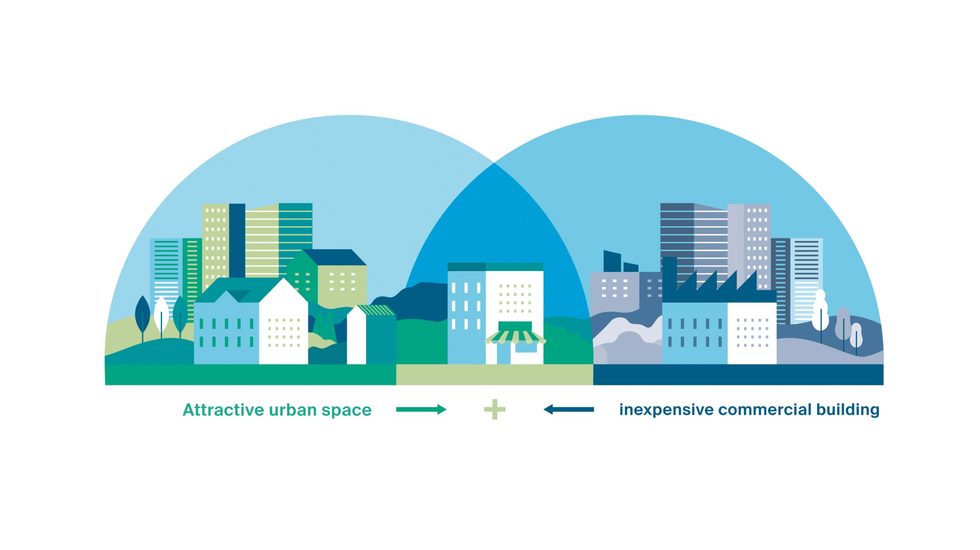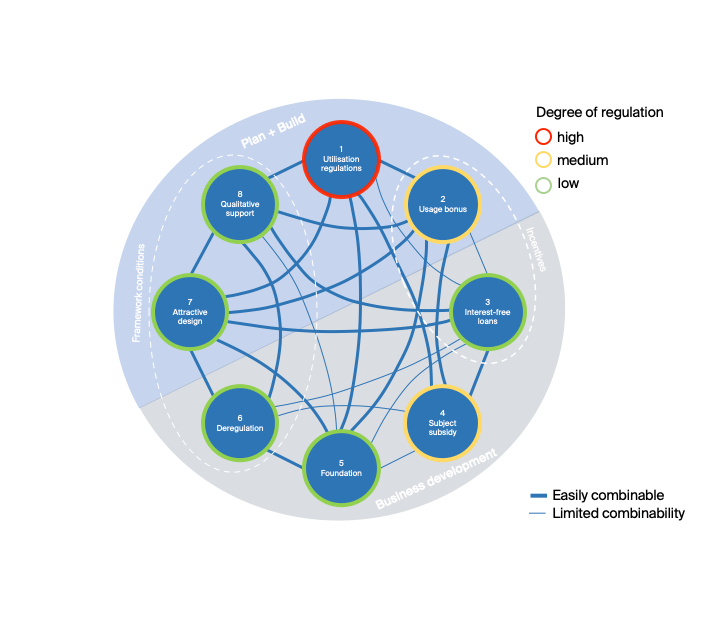Affordable commercial space in the city of Zug
August 30, 2021

Due to its attractiveness as a location, the city of Zug faces the challenge of both affordable housing and affordable commercial space being in short supply. The latter is oten displaced by higher-value residential or office uses. In many cases, this has a negative impact on micro-location quality.
Commercial space, especially on the ground floor, has an invigorating effect on its surroundings. However, finding this suitable ground-floor space is difficult for price-sensitive or low-turnover businesses in the city of Zug, especially in high-demand locations. Nevertheless, an attractive urban space for all depends on the presence of commercial enterprises. This makes the provision of affordable commercial space of great public interest.
Normally, the topics “attractive urban space” and “affordable commercial space” are dealt with separately by municipalities. In this study, commonalities and synergies between these two topics were identified. The aim was not only to show how affordable commercial space can be made available, but also to utilise its full potential to promote the attractiveness of the location and the revitalisation of inner cities or transformation areas.
The following questions emerged:
- What criteria should be used to promote affordable commercial space?
- Which sectors should be focused on?
- Which tools are available or should be developed?
- Where do synergies arise, e.g. in the revitalisation of ground floors as part of site developments?
With the promotion of affordable commercial space, neighbourhoods can be revitalised and local businesses strengthened. The question is: what should be promoted where, how and with what goal? As a result, eight concrete options for action were developed and compared:
- Classification of course of action in the thematic areas of economic development/urban development and planning/building
- Additional differentiation into framework conditions and incentives
- Assessment of the degree of regulation

As an example, the course of action “use regulations” is shown here:

Based on this study, the public sector can define the next steps:

More on the topic of uses in ground floor areas: